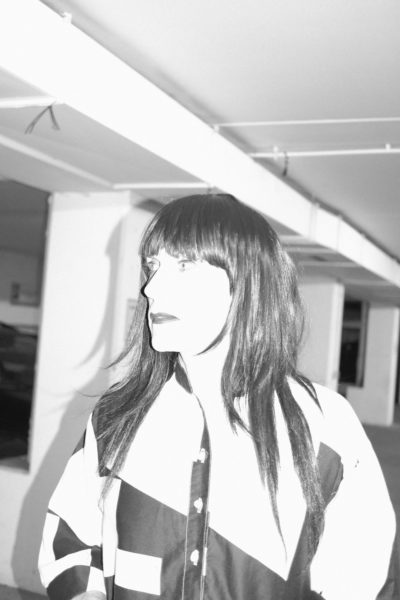On Hymn to Moisture, Seth Horvitz again delivers sonic experiments of labyrinth-like techno under the Rrose alias. The album reflects an approach the artist has already been putting forward on previous EP. On Rrose’s first release Primary Evidence, back in 2011 on Sandwell District, the B-side track “Bare Hand” defined a minimalistic blueprint for experiments that continued ever since on the artist’s own EAUX label.
Rrose’s explorations of the limits of perception on these 12-inch dance records also point to a wider history and tradition; one that the artist has been focused on both solo and in collaborations with Bob Ostertag or Charlemagne Palestine. Interwoven with techno’s dance continuum, ideas of composition can be found that stem from academic institutions and their studios, were formulated via jazz groups and took shape in rituals of indigenous people further away from motor cities.
Now, on the new album, Rrose would especially like to reflect on the “working between dance music and avant-garde composition,” as Hymn to Moisture‘s press text states. While acknowledging the existence of an in-between is a comparably easy task, a reflection on its consequences and an actual combination poses far more of a challenge. To point us in the right direction, Rrose provided a musical selection of six pieces that, as the artist lets us know, “unwittingly bridge the gap in some way between these two worlds.” Below, you will find these six pieces—from “early electronics” and field recordings to current so-called experimental music—alongside some words by Rrose.
Laurie Spiegel’s “Drums” from The Capriccio Series Of New American Music Number Two (Capriccio Records, 1983)
“This piece of constantly mutating polyrhythmic bliss was created at Bell Labs in the mid-1970s, but incredibly, it layers perfectly with just about any contemporary techno track. It’s always on deck in my DJ sets.”
Raymond Scott’s “Toy Funk,” featured on the archival compilation of the composer’s work, Three Willow Park: Electronic Music From Inner Space, 1961–1971 (Basta, 2017)
“This little experiment from Raymond Scott’s studio is pure techno, and, even though it’s hard to believe, was created in the 1960s.”
Herbie Hancock’s “Raindance” from Sextant (Columbia, 1973)
https://www.youtube.com/watch?v=ocXXhyByitY
“This is another beautiful (and well known) example of pre-techno techno.”
The “Group Ceremonial Drumming” of the Bosavi tribe, Recorded in 1987 by Steven Field, from Bosavi (Rainforest Music From Papua New Guinea) (Smithsonian Folkways, 2001)
“This one must be heard with a good playback system to be understood. The field recordist Steven Feld wandered through a group of ceremonial drummers, capturing a slowly morphing audio picture of each corner of the ceremony. Drums move in and out of phase, frequencies and resonances bend as they come closer and further away from the microphone. The result is an intimate, nuanced, and disorienting experience that is very different from the perspective of a performer or audience member.”
Stine Janvin’s Fake Synthetic Music (PAN, 2018)
“This is one of my favorite albums from last year. Using only her voice, Stine Janvin creates intricate rhythmic textures that I can only describe as alien, with a distant but recognizable influence from techno.”
Ben Vida’s “Damaged Particulates” from Damaged Particulates (Shelter Press, 2016)
“Ben Vida explores the disorienting psychoacoustic principles that I love and try to explore in my own music. I love fading this in over a techno track at peak time, it does something different in every room.”
Hymn to Moisture, Rrose’s new album, is out this Friday, 8th November 2019, via EAUX.
